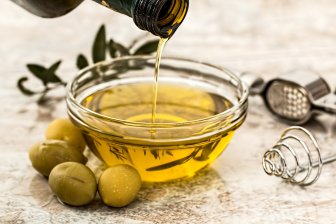
Nothing gives more joy than sitting by the window on a rainy day, eating hot pakodas and sipping some adrak chai. But most of the time, instead of enjoying our deep fried goodies, we are scared eating them. Let’s get to know myths & facts about deep frying & whether its healthy or not.
Question 1 – Isn’t Deep fried food Fattening?
– The USFDA has reviewed its dietary guidelines in 2015 saying that there is no upper limit to one’s daily dietary fat intake. In simple words, the ban on total dietary fat has finally been lifted, and it’s none other than the USFDA asking you not to worry about the fat & indulge in your bhajjiyas guilt free 🙂

Second point is that Nutrition science tells us that addition of fat to a meal brings down its glycemic index. Presence of Fat in a meal delays the process of converting food to blood sugar. Hence, the more fat, the slower the sugars or carbs are digested, and lower is the glycemic index. Not difficult to understand why we have food combinations like aamras and puri. If the mangoes in aamras are infamously known to increase your sugar levels and make you fat, the deep fried puri along with it makes sure the GI of the overall meal stays in check.
Question 2 – What are the best oils for deep frying food?

– We need to consider two things to determine the best fat that will not break down at high temperature to create toxic compounds- one is the smoke point and other is the stability of the fat.
Ghee has the highest smoke point & being the most stable fat that undergoes very little oxidation when heated, it makes for the first best medium to fry food. Second to ghee are filtered oils from local oilseeds like mustard, coconut, sesame and groundnut.
And, What about olive oil? Well, olive oil because of its low smoke point is not suited for deep frying. To know more about oils, do watch my You tube video on Olive oil v/s Indian traditional oils.
Question 3- Can we reuse the oil?
– Oil that you are frying in should not be reused as reusing oil oxidises the fat, forming free radicals and compounds which are harmful to our health. The only exception to this is Ghee, and that’s because of its unusually high smoke point.
Question 4 – Is deep fried food healthy?
– The answer to this is both yes and no. It is certainly healthy when you are making your deep fried stuff at home. Why? Because at home, you can make sure you are using nutrients and antioxidants rich ghee or filtered oils, you can also make sure you do not reuse the oil and eat them fresh and hot.
While you eat them outside say at restaurants, most of the time, these parameters are beyond our control. Also, most of the time, at restaurants and hotels, the deep frying is done twice, one before and one again just before serving you.
Question 5- How much can we eat?
– The act of overeating the healthiest food in the world can also create toxicity in the body. So like with everything, do not go overboard, eat slow and eat mindful.
Keep calm, eat the fried, and eat it wise!
Image credit- Google images
Confused by the misinformation about potential health problems with traditional Indian foods? Get in touch with award-winning Mumbai dietitian and nutritionist, Munmun Ganeriwal, a strong advocate of the holistic, wellness benefits of fresh, local, and traditional Indian foods



